Ghost Recon Advanced Warfighter
AGEIA almost couldn't wish for a bigger title than Tom Clancy's Ghost Recon Advanced Warfighter. Indeed, a slight delay to the game's PC release moved it to last Friday, somewhat explaining why PPU reviews are popping up all around the net. In short, before GRAW users had little but CellFactor to play on their latest toy.Ghost Recon is a curious beast. It is the first AAA title to make use of AGEIA's PhysX physics engine yet to make the game require a PPU in the same way that CellFactor does would have been commercial suicide so Swedish developer Grin (possibly in conjunction with publisher Ubisoft) licensed the Havok physics engine, rumoured to cost in the region of US$100,000 - 200,000 per game. Havok is highest-profile 3rd party physics engines available, powering the likes of Half-Life 2 and F.E.A.R., as well as The Elder Scrolls IV: Oblivion and even games like Age of Empires III.
PhysX, on the other hand, costs developers nothing: AGEIA released the SDK free of charge, hoping to make money from hardware sales. Sure, there would have been extra development time to integrate the routines but its inclusion has generated a huge amount of interest in the game.
The question, then, is this: what does the hardware-accelerated PhysX physics bring to the Ghost Recon gameplay experience that the software-only Havok physics doesn't? Let's find out...
Grenading a car
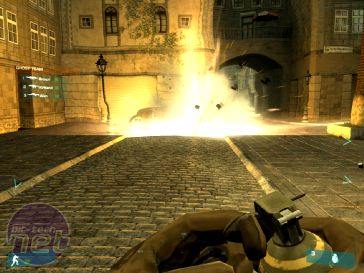

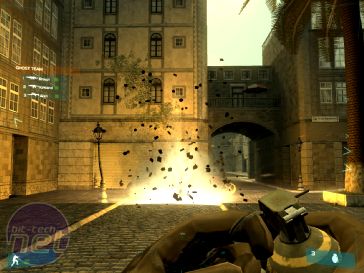
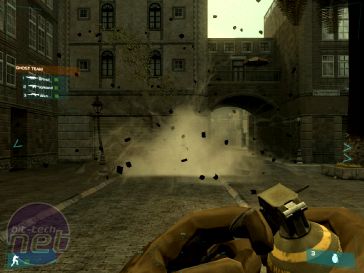
The top row is the stock game, running Havok physics in software, calculated on the CPU. In isolation, everything seems normal: big explosion, some smoke and various bits fly off the car.
It is only when you run the same sequence with a PhysX card do you start to wonder if all the hype surrounding PPUs actually has some substance. Large amounts of debris spews forth from the car, though curiously, none of it looks very car-like. Dirt and other particles rain down but disappointingly, it all fades away to nothing shortly afterwards.
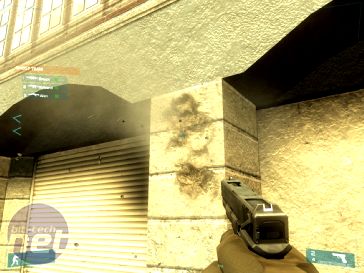

The same appears true of any stray fire hitting concrete pavements or in this case, stone wall. The regular game (left) appears "normal" by today's standards: some dust, a few stone chips and some nice Parallax Mapped chunks. Switch on the PPU and you get all of the above plus a stream of rock debris. AGEIA stress that these are "rigid bodies" ie 3D polygon objects, and that they react realistically with the surrounding environment. True, they bounce around a bit, but they fade away all too rapidly, destroying any extra feeling of realism they may have added.

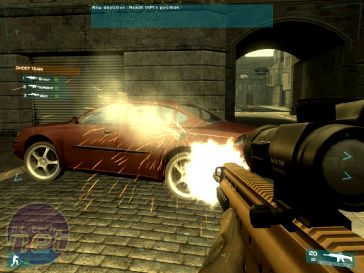
One of the more effective elements of eye candy improved by the presence of a PPU is spark effects. Again, on the left is the regular game. Sparks fly off the car body as we shoot it, but they do so in large spikes of light which are very visibly just straight lines. You can click for a 1600x1200 screenshot.
Compare it with the PPU-enabled screenshot on the right: dozens of realistic-looking sparks fly about, bouncing on the road and the car body itself. They fade away after a few seconds, but unlike the rock / stone debris, this is at least in line with reality.
Let's take a look at some performance figures, shall we?

MSI MPG Velox 100R Chassis Review
October 14 2021 | 15:04










Want to comment? Please log in.